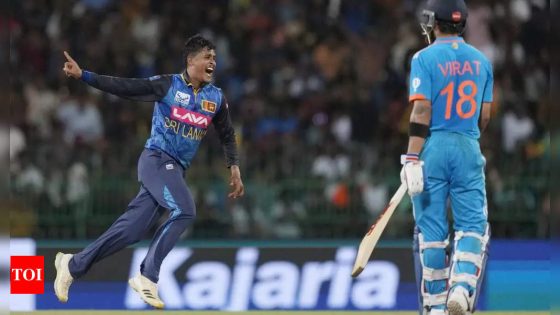The match saw India chasing a target of 241 on a pitch that was conducive to spin bowling.Despite a promising start, India were bowled out for 208 in 42.2 overs.
Rohit Sharma‘s aggressive 64 off 44 balls, featuring five fours and four sixes, initially set a strong foundation for India. Alongside Shubman Gill, who contributed a steady 35, the pair propelled India to 97 for one in just 13.3 overs.
However, the dismissal of Sharma, caught off a reverse sweep by Vandersay, marked the beginning of a dramatic collapse for the Indian batting order.
From a comfortable 97 for one, India’s situation quickly deteriorated to 147 for six, losing six wickets for just 50 runs within a span of 10 overs.
Vandersay, stepping in for the injured Wanindu Hasaranga, was the architect of this collapse, effectively exploiting the conditions and the Indian batsmen’s vulnerabilities. Notable dismissals included Shivam Dube, Virat Kohli, and Shreyas Iyer, all falling to Vandersay’s spin, highlighting the challenges posed by the pitch.
Despite the top-order collapse, Axar Patel attempted a counter-attack with a resilient 44 off 44 balls, including a brief partnership with Washington Sundar.
However, his effort was cut short when he was caught off the bowling of Charith Asalanka, concluding any realistic chance of an Indian comeback.
Earlier in the day, Sri Lanka’s batting effort was characterized by a challenging start against India’s spinners, particularly Washington Sundar, who finished with figures of 3/30. Kuldeep Yadav also contributed with 2/33, applying pressure on the Sri Lankan batters.
Despite struggling at 136 for six, a crucial 72-run partnership between Dunith Wellalage and Kamindu Mendis provided the hosts with a competitive total of 240 for nine. This partnership, alongside some late-order hitting, allowed Sri Lanka to post a challenging total on a difficult pitch.
Source Agencies




